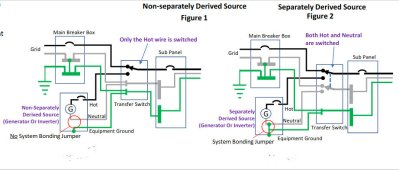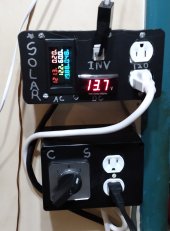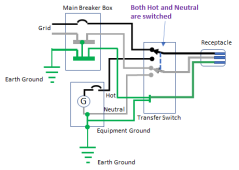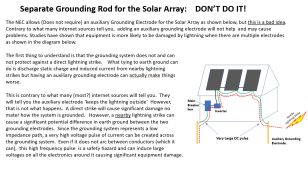Hdonly
New Member
- Joined
- Sep 1, 2020
- Messages
- 88
I have a 120vac inverter from my solar going to a dp on-off-on manual transfer switch. The commercial hot and neutral are isolated from the inverter hot and neutral. The output of the switch goes to one 120 volt receptacle that my computer plugs in to. My question is should I tie the ground from the inverter and commercial power ground both to the ground connection on the recepticle or should the grounds be switched also?







